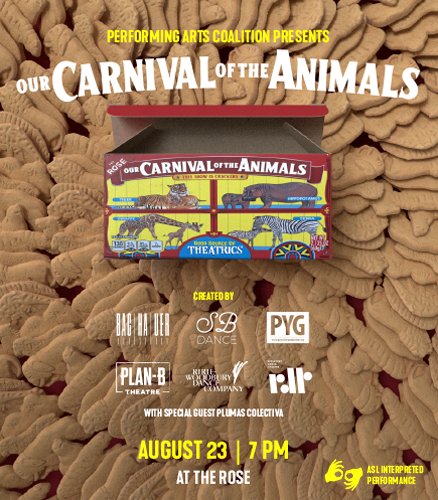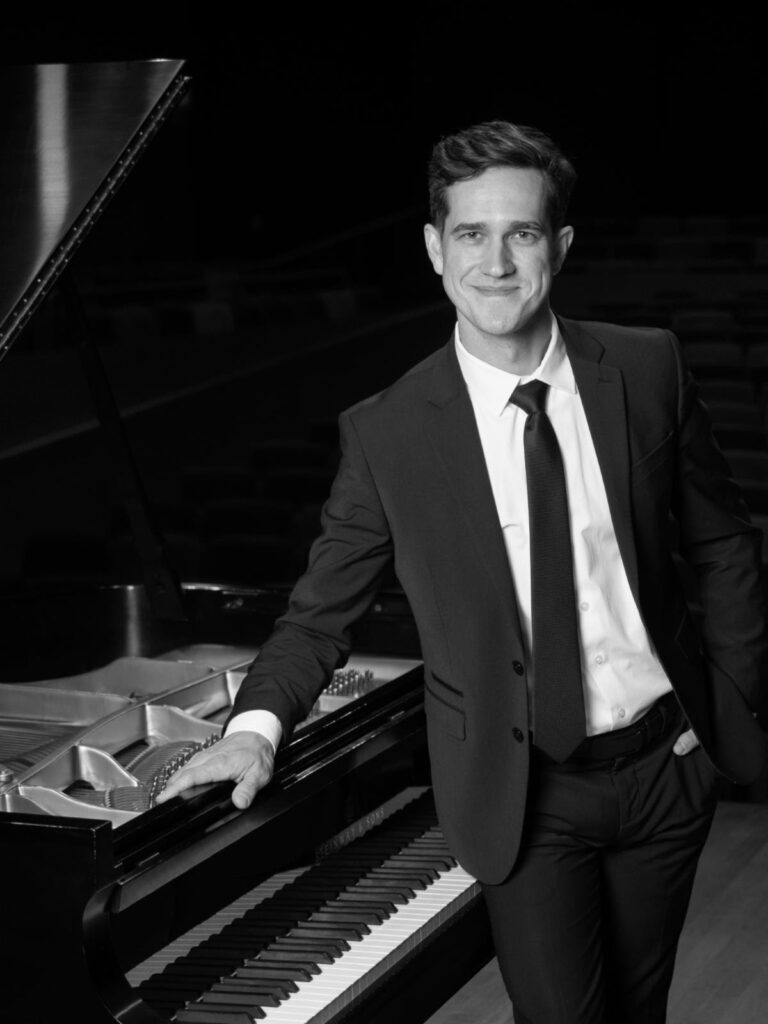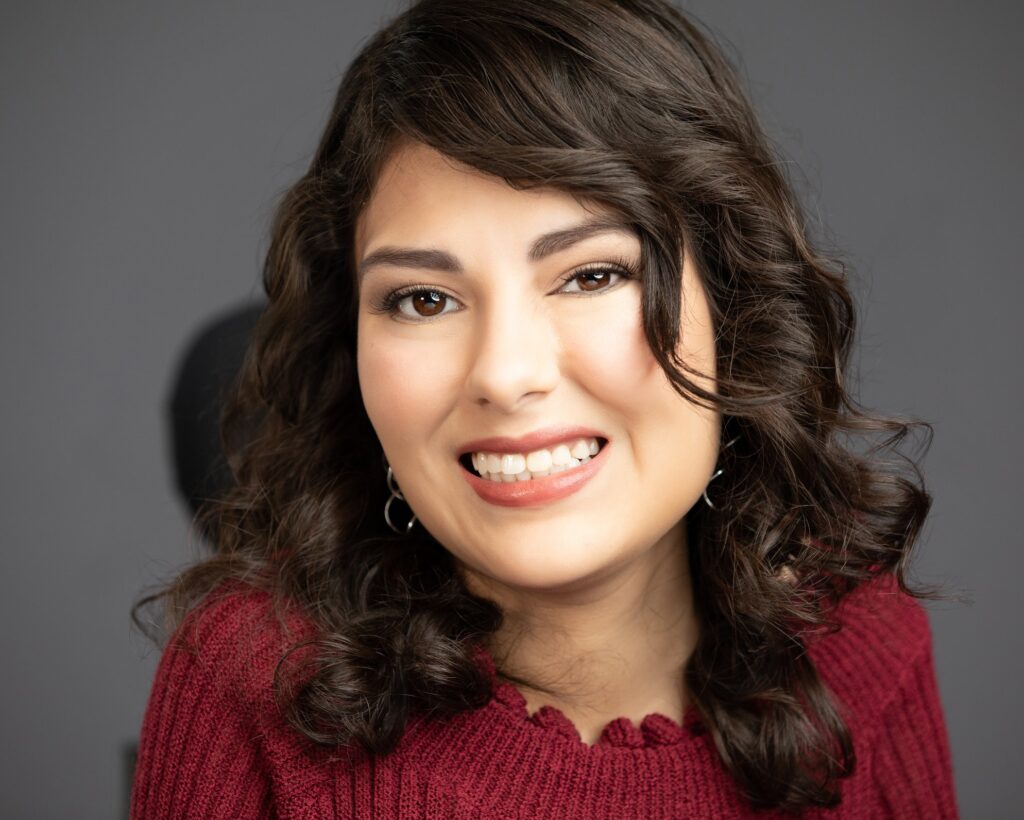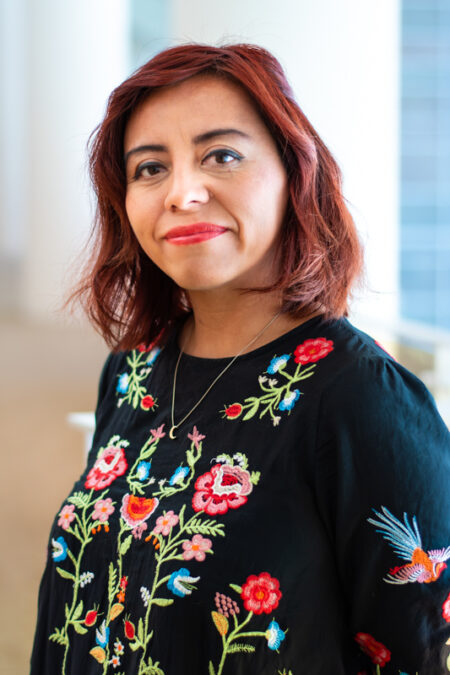Last year’s Pictures at an Exhibition: ReFramed, which the Performing Arts Coalition of the Rose Wagner Center for Performing Arts offered, passed the test of full collaboration with sufficient top honors that the six residential companies decided to dig in with the same spirit but this time with Our Carnival of the Animals.
Last year, the companies — Gina Bachauer International Piano Foundation, Plan-B Theatre, PYGmalion Theatre Company, Repertory Dance Theatre (RDT), Ririe-Woodbury Dance Company and SB Dance — built the show around Modest Mussorgsky’s Pictures at an Exhibition. This year, one of Camille Saint-Saëns’ most familiar works, The Carnival of Animals, sets the foundation for an hour-long production that is sure to delight audience members of all ages at The Rose’s Jeanné Wagner Theatre, which is set for Aug. 23 at 7 p.m.
For the 14th edition of the Performing Arts Coalition show, which has become a late August fixture for whetting the audience appetite for a new season of shows, concerts and productions, Carnival will be packed with representatives from the animal kingdom. With the script that PYGmalion Theatre Company’s Fran Pruyn assembled as a “Carnival – A Zoological Fantasy” or “fantasmagorical arrangement,” the show will feature pianists Cahill Smith and Shannon Hirschi on four-hand arrangements of the music by Saint-Saëns and other composers, poems from three members of Plumas Colectiva and a quartet of tortoises played by Barb Gandy, Tamara Howell, Joanne Rowland and Linda Smith, who comprise the “Carnival of the Animals Management Team.”
Saint-Saëns’ music lands ideally in the bailiwick of The Rose companies. The suite of 14 movements, which includes some of the most recognizable classical music ever written, was completed in 1886 but actually did not have its public premiere until 1922. The composer wrote the music to lighten things up while he was working on the magnificent Organ Symphony. He originally intended the music for his students in Paris but the suite received its unofficial premiere at a private concert in 1886. One eyewitness account of that evening concert characterized the work as “a very witty fantasy burlesque … [and] this zoological fantasy was received with great enthusiasm.” In fact, there were other private performances including some with the ”musicians wearing masks of the heads of the various animals they represented.” La Figaro, the newspaper, warmly characterized Carnival as “themes, whimsical ideas, instrumentation compete with buffoonery, grace and science. … When he likes to joke, the master never forgets that he is the master.”
Representing Bachauer, Smith, who is an internationally acclaimed pianist on the faculty at Utah State University, said in an interview that while he has frequently taught the Carnival suite to his students, this is the first time he is performing it formally in public. Hirschi, who will be joining him, is also at USU where she is working on her master’s degree with Smith.
“It’s perfect for children and families and has the dry wit and humor that the French are well known for,” he added. In fact, while many know of famous movements from the suite such as The Swan and Aquarium, the composer included a movement titled Pianists, which was a sharp self-deprecating, tongue-in-cheek burn on these particular instrumentalists. The original score specified that the two pianists “should imitate the hesitant style and awkwardness of a beginner” and there have been many performances where pianists actually play out of sync with each other. While children can delight in every movement of the suite, there are some moments that suggest this is not children’s music, such as The Cuckoo in the Depths of the Woods. The show will include other bits of music including Rachmaninoff’s Vocalise and Khachaturian’s Sabre Dance.
Smith said playing four hands piano has its own set of theatrics and, as he termed it, “hilarious logistics.” Fingerings, movements, crossovers and pedal footwork make for challenging issues on the real estate of the keyboard instrument. “It can be like a roller coaster at times and become infernally difficult,” he added.
The trio of poets from Plumas Colectiva include Melissa Salguero, who incidentally is also president of the board for Plan-B Theatre, Laura Ruiz and Monica Lisette. In an interview with The Utah Review, Salguero said that they are excited about doing spoken word performances in a theatrical setting rather than the customary competition venue.
She added that the poets function similarly to a Greek chorus in the play. While contemporary themes of sociopolitical activism, social justice and free speech expression are definitely part of Plumas Colectiva’s work, Salguero said she and her colleagues also write a lot about animals and nature.
In addition to introducing the Carnival, Salguero also has written a poem about the tortoises: (One of the verses, for example: Yes, she’s ancient & it’s easy to forget her./To overlook her, because this kind of quiet isn’t convenient to everyone in a rush).
Salguero’s tortoise poem tips its hat to the late Andrea Gibson, who died a few weeks ago from cancer. An internationally known poet, Gibson was a creative voice who was familiar to many in the Intermountain West’s poetry slam and regional spoken-word performance scene. A winner of regional and national slam competitions, Gibson published books, released albums with spoken word performance, conducted workshops and performed in public to large audiences. The documentary film Come See Me in the Good Light, directed and produced by Ryan White, captured the specific essence of Gibson who wrote their work focused immediately on how the words sound out loud in rhythm and melody. The film won Sundance’s Festival Favorite Award last January. Salguero reminds us of the endurance, longevity and the power of the art form, as Gibson eminently demonstrated, to outlast everything else, no matter how anyone would try to make it disappear or be forgotten.
Salguero’s colleagues follow suit with their own potent connections to the symbolism of the Carnival animals. In Fossils, Ruiz celebrates the living language of Nahuatl and the significance of nourishing and watering the language so that it otherwise will not dry and die out and become a remnant or fossil. Later, Lisette’s poem casts out the snakes, which acutely resonates with piercingly precise symbolism to elucidate the current tenor of our sociopolitical environments.
Salguero said writing the tortoise piece was “a little difficult” for her, which she composed as a homage not only to Gibson but also to every individual artist and activist who has confronted and resisted the polarization we presently see in our politics. Art may not be overtly political but it always has been innately so because of its creative language of freedom, justice and conscience. Likewise, she said that it is to recognize the legacy of the art form while realizing that what may have worked in the past may not be as effective anymore. While Carnival sprung from 19th century ideas and expressions, the latest collaboration by the residential companies at The Rose and guest performers invites a new generation to experience a beloved masterpiece in a fresh context and an instructive purpose and message that feels right in these 21st century times.
Tickets for the one-hour production are $15 for general admission and $10 for students. For tickets and more information, see here.






